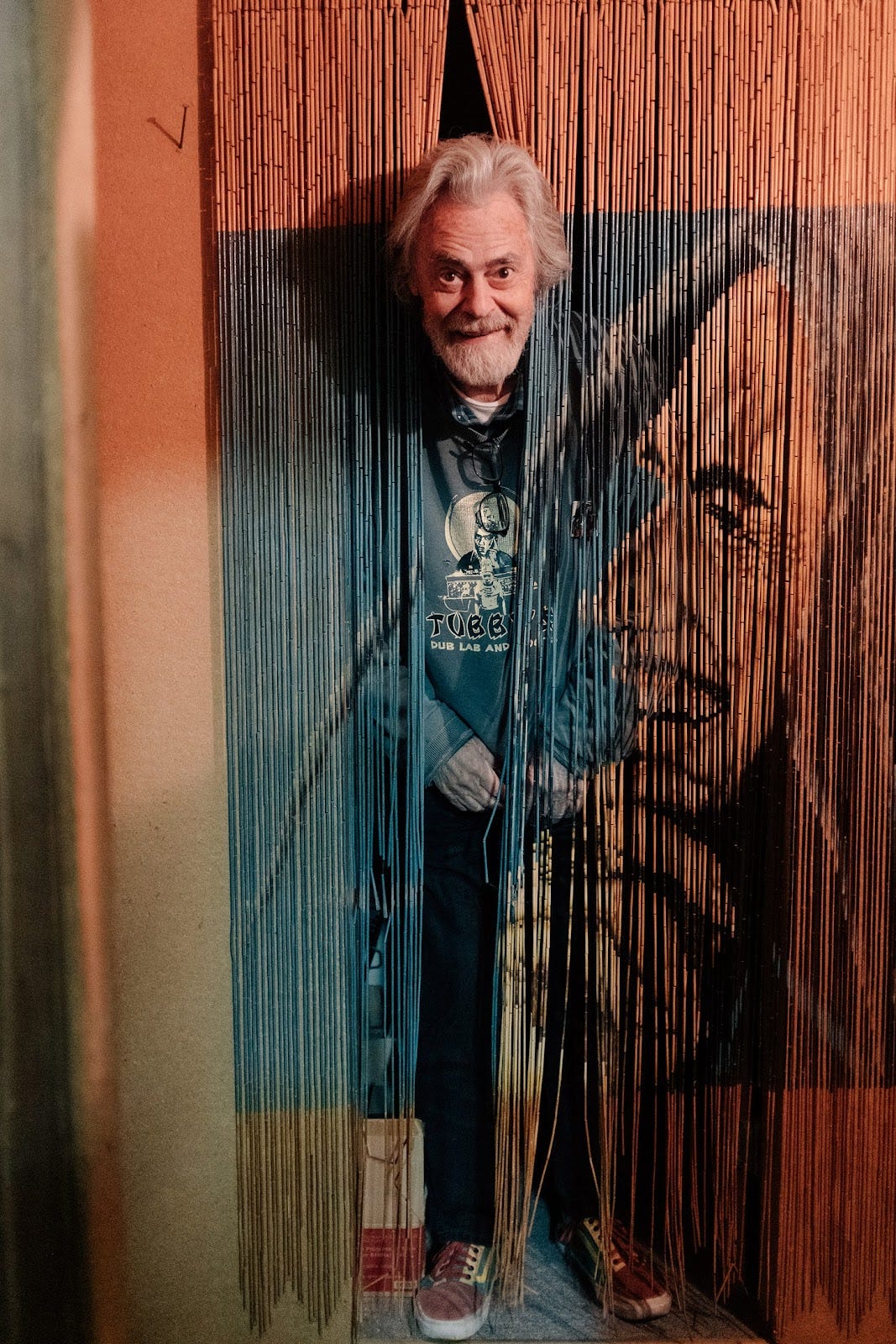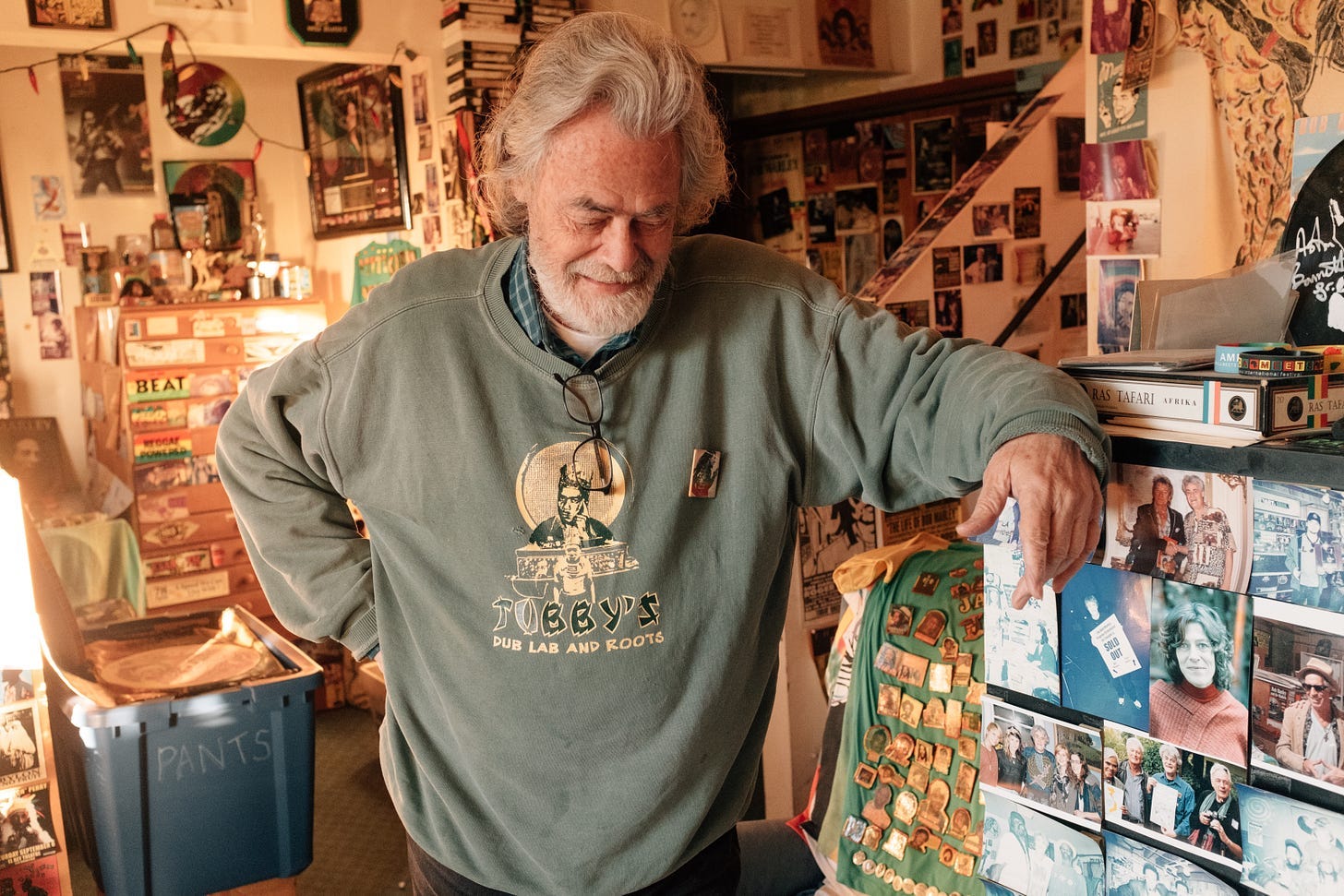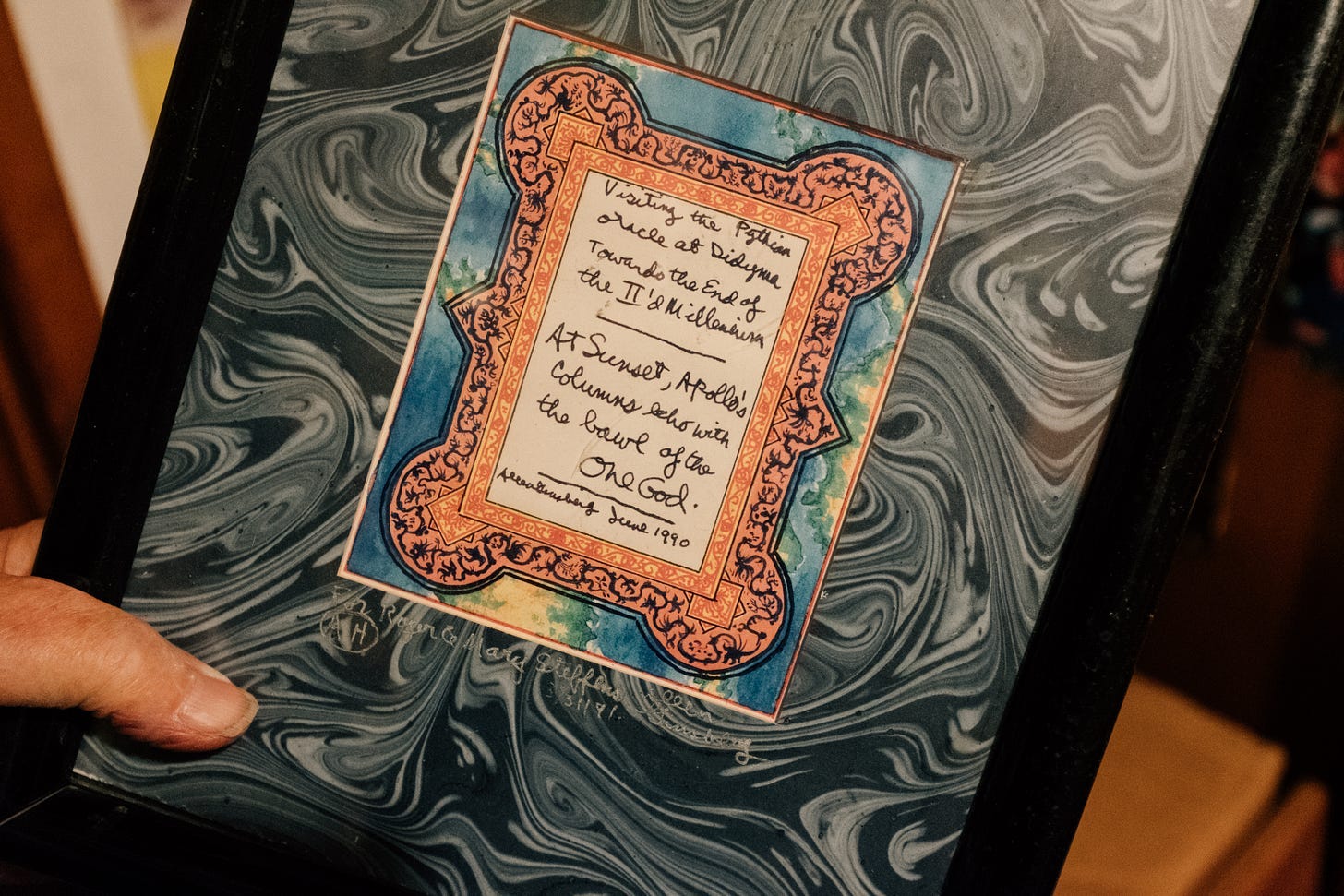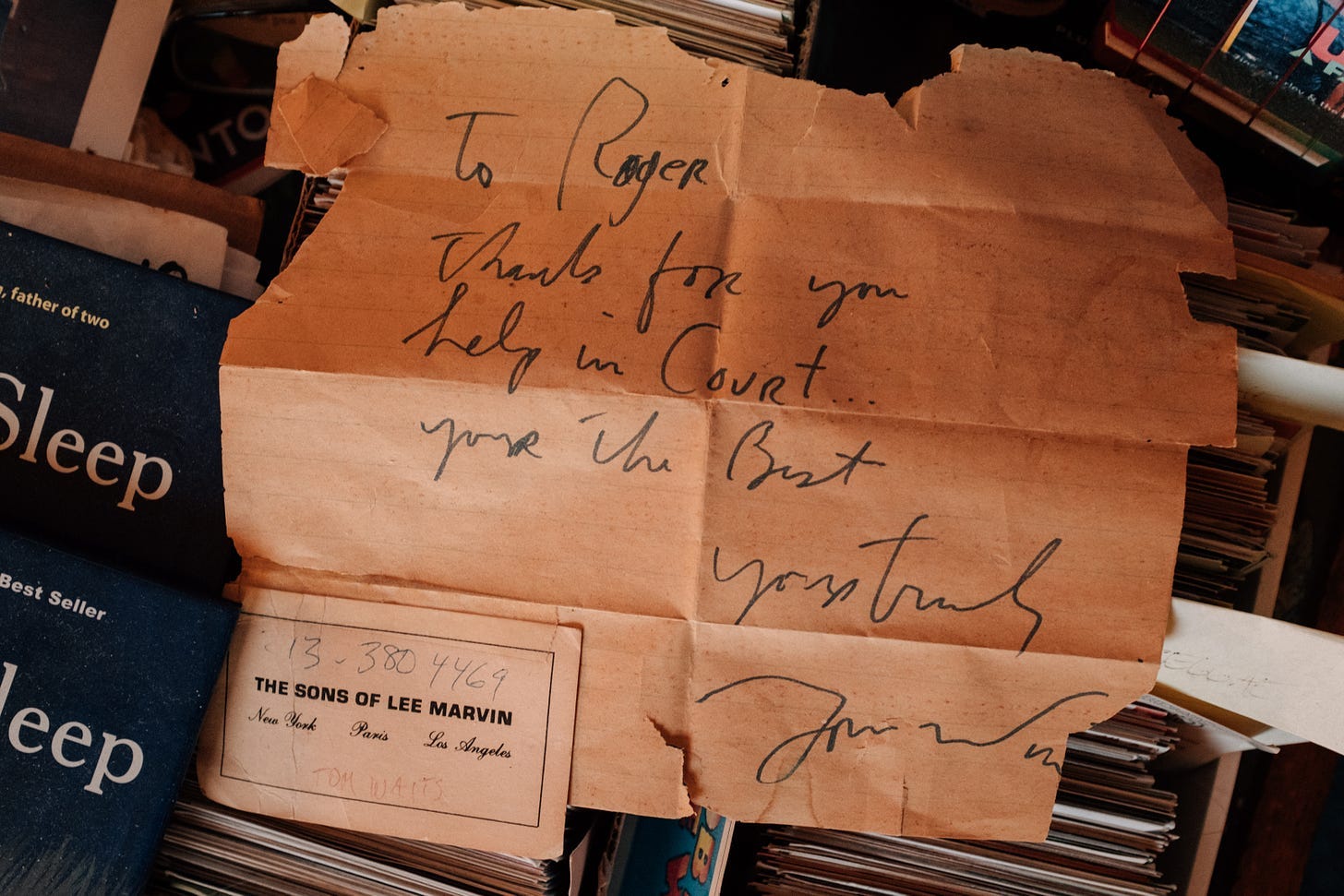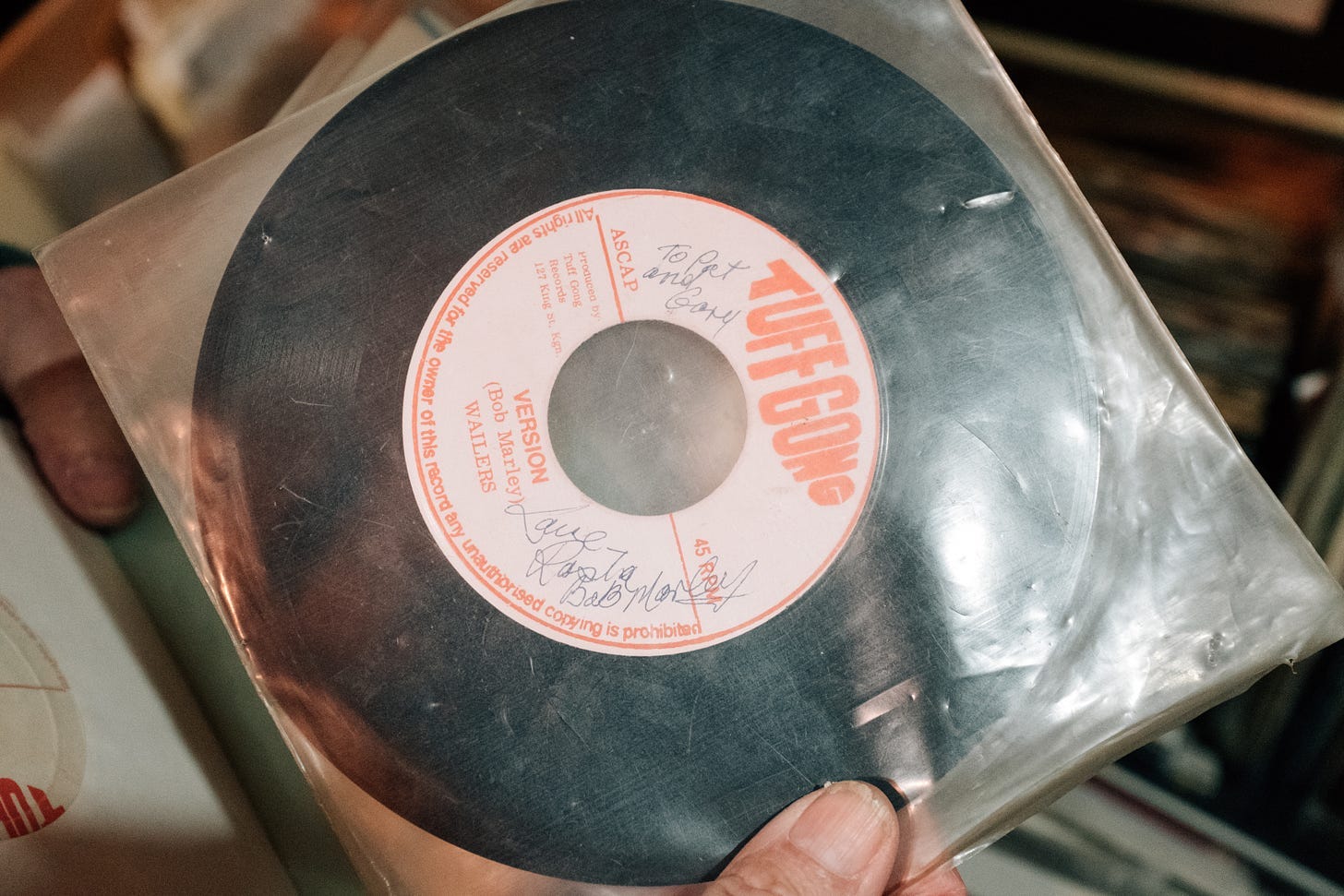John Peabody is a friend of WITI. He is currently Director of Branded Content at Gear Patrol and writes the excellent Substack the Hand & Eye.
John here. Tucked away in the basement of a house on a quiet street in Echo Park is what must be the world’s largest archive of reggae music and memorabilia, and I recently got to visit. The objects - records, tapes, pins, posters, t-shirts, memorabilia of all kinds - fill half a dozen rooms and cover every single surface. It’s giant and it took decades to amass.
Reggae legends like Peter Tosh, Rita Marley, and other notables like Keith Richards, Oliver Stone, and Leonardo DiCaprio have all made pilgrimages to the archives to visit the man who has spent his life assembling it.
We are experimenting with running some weekly classifieds in WITI. If you’re interested in running an ad, you can purchase one through this form. If you buy this week, we’ll throw an extra week in for free on any ad. If you have any questions, don’t hesitate to drop a line.
You like interesting things: come check out Nautilus. Science storytelling with style. Also, a holiday gift for the brightest you know. Subscribe yourself, or give a very elegant gift
Coaching for creative professionals who want deeper personal insight, a conviction in their work, and to make waves in the art world. Subscribe to Mission
Royal Braun connects cutting edge companies with key creative talent. Meet Royal Braun
Why is this interesting?
That man is Roger Steffens, who is probably most known these days for the Instagram account The Family Acid, an account his daughter started while scanning the film photos he took documented his counterculture life. The Family Acid, which has led to three books, is an epic trip through Northern California, Morocco, New York, Europe and other parts of the globe with characters like Ken Kesey, John Steinbeck IV, Timothy Leary, war photographer Tim Page, and countless others making appearances. I asked Steffens if there was ever a time he didn’t take photos.
“No,” he answered without skipping a beat, and he of course took photos of me visiting too.
The Family Acid is just one very visually fascinating part of Steffens's life. There’s also Steffens the Brooklyn-born kid who grew up obsessed with radio and comic books, there’s Steffens the army vet (he was in Vietnam during Tet and was awarded a Bronze Star), there’s Steffens the actor and there’s Steffens the Reggae expert. He’s the author of So Much Things to Say: The Oral History of Bob Marley, and host of Reggae Beat, a KCRW reggae show that he co-hosted. He was among the last journalists to interview Bob from 1979 to 1987. And of course, there’s Steffens, the creator, and steward of the Reggae Archives, that giant tomb of all things reggae that takes up a large portion of his LA home.
I read Steffen’s oral history of Bob Marley and quickly googled him to find his email and tell him how much I enjoyed it. It was only then that I connected that he was also the guy behind The Family Acid. He responded quickly and invited me to visit the archives the next time I was in LA.
“If you're ever in Southern California I'd be delighted to show you the Reggae Archives,” he wrote me, and I had to take him up on the offer.
This fall I made my own pilgrimage to the archives. Aside from thin red, gold, and green stripes painted on his garage door, there’s nothing on the outside of his house that would tip you off to the contents inside. Steffens greeted me with a hug and showed me around, telling me about interviewing Bob Marley, his friendship with Peter Tosh, Burning Spear, traveling to Jamaica for Reggae Sunsplash and so many other stories.
When Steffens was on assignment for the LA Weekly, he created some of the most iconic images of Bob Marley ever taken and he was among the last journalists to interview Bob as well. As a broadcaster, he made endless amounts of recordings with reggae artists - interviews and soundboard concert recordings.
I quickly realized that Steffens is something of a real-life Forrest Gump - someone whose life has taken him all over and has been filled with amazingly rich experiences and unforgettable characters. So what does he attribute that to?
“Just being open,” he told me as we talked into the heart of the Reggae Archives, a windowless room filled with shelves and shelves of reggae records, including some of the first 45s of The Wailers and Bob Marley that were quickly stamped out for the iconic sound systems of the day. These were the records that would make Marley and change culture forever.
Steffens openness to life took him from Brooklyn to Vietnam (It took me three weeks to realize the war was wrong, he said), then to Morocco, and back to California for a life of counterculture.
Walking through his house is like looking at a flipbook of 20th-century cultural history, not just reggae. There’s the painting Carlos Santana gifted Steffens. Then there’s a little painting and poem Allen Ginsberg made for him. Taped to a file cabinet is a picture of Keith Richards standing in the living room and another of Leonardo Dicaprio and Giselle Bunchen (when they were dating) in the same spot. Then on the wall is a poster with a note from Peter Tosh, and in a back room, an original pressing of Graceland, with a personal note from Paul Simon thanking Steffens for introducing him to the music of Ladysmith Black Mambazo.
A note from Tom Waits scribbled on a torn piece of paper, an artifact of when Steffens testified as a musical expert for Waits in a copyright infringement case, sits on a chair.
“To Roger, Thanks for your help in Court. You’re the Best. Tom Waits”
The reggae memorabilia is also of course next level. A T-Shirt from the One Love Peace Concert in 1978, where Marley famously joined the hands of political rivals Michael Manley and Edward Seaga on stage. There are countless buttons, posters (signed by just about every reggae artist you can imagine) and countless tapes and records of reggae shows. It’s an amazing temple to all things reggae.
It took Steffens decades to amass all this history, and he tells me that just recently he’s reached an agreement to create a permanent home in Jamaica for the archives. The deal is not completely finalized, but it looks like Steffens’ three requirements will be met for housing the archives: The archives must stay completely intact and not be broken up, if any of the items have commercial value the appropriate artists must be fairly compensated and the archives must be accessible to the public. The buyer owns the Sumfest Reggae Festival and plans to build a museum on its grounds in MoBay to house the collection.
Steffens told me he’s had numerous offers over the years from collectors, but none have been able to meet these requirements. So soon, if all goes well, Steffens will pack up a lifetime of reggae obsession into boxes and ship it all off to Jamaica for everyone to enjoy. (JP)
—
Thanks for reading,
Noah (NRB) & Colin (CJN) & John (JP)
—
Why is this interesting? is a daily email from Noah Brier & Colin Nagy (and friends!) about interesting things. If you’ve enjoyed this edition, please consider forwarding it to a friend. If you’re reading it for the first time, consider subscribing.



